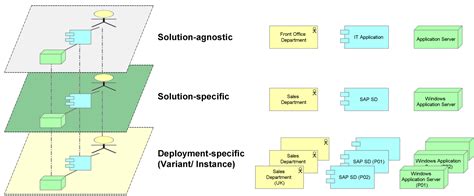Abstraction in software design is often presented as a panacea for code management issues, yet real-world application reveals its nuanced nature. As developers strive for cleaner, more reusable code, they frequently encounter the DRY principle, which advises against code duplication. However, the tendency to abstract similar looking code, whether via functions or classes, doesn’t always lead to streamlined solutions. In fact, seasoned developers caution against overzealous abstraction, noting that adding layers of indirect functions can lead to a ‘spider-web’ of dependencies that hampers comprehension and debugging. These cautionary tales from the trenches highlight the delicate balance between creating helpful abstractions and maintaining code simplicity.
The DRY principle, while beneficial in theory, comes with its caveats. Misapplication can lead to obscure code constructs and unnecessary complexity, especially if different pieces of code are forced into a single abstraction prematurely. On the flipside, avoiding repetition at all costs can mean overlooking deeper structural issues in the system. For instance, if a function is expanded and subsequently requires delegation to other functions, developers may end up managing a cascading series of function calls, ironically complicating what was initially straightforward code. This reflects a fundamental misalignment between the principle’s ideal application and its real-world outcomes, prompting developers to seek a more balanced approach.
A compelling alternative proposed in developer discussions is the ‘rule of three’, a pragmatic guideline suggesting that similar code should be refactored only after it appears thrice. This approach, linked to the desire to prevent premature optimization, pushes for a deeper understanding of the ways in which pieces of code are genuinely related. By quantifying the threshold for refactoring, it integrates well with the not-so-stretched principle of maintainability and could potentially safeguard against excessive abstraction.
Delving into architectural decisions, some developers argue that object-oriented programming (OOP) philosophies, like class-based systems, can backfire by intertwining state and behavior too closely. Critics assert that mixing state with function within classes leads to a misrepresentation of both data and operations, making the system hard to reason about. Instead, there’s a growing advocacy for the utilization of functions and data structures separately, leaning towards programming approaches that emphasize immutable states and purer functions for cleaner, more predictable code executions.
Reflecting on these perspectives, it’s clear that wisdom in software development often stems from weighing the costs and benefits of any given principle or technique. As programmers navigate these choices, they rely heavily on experience and context, tailoring their strategies to the unique demands of each project. This iterative learning process underscores the artistic side of software engineering, where rigid adherence to rules is often less valuable than a flexible, thoughtful approach to problem-solving. By integrating insights from veteran developers, we can better appreciate the nuanced decision-making that goes into crafting robust, maintainable software systems.
Lastly, the ongoing debate between structured and functional programming, alongside the nuances of refactoring strategies like DRY, provide valuable lessons in adaptation and moderation. These discussions highlight the importance of maintaining a balance between abstraction and concrete implementation, urging developers to continually refine their understanding of code structure and its impact on software quality. Moving forward, embracing these complexities rather than shying away from them will likely lead to more resilient and effective coding practices, marking progress in the ever-evolving field of software development.


Leave a Reply